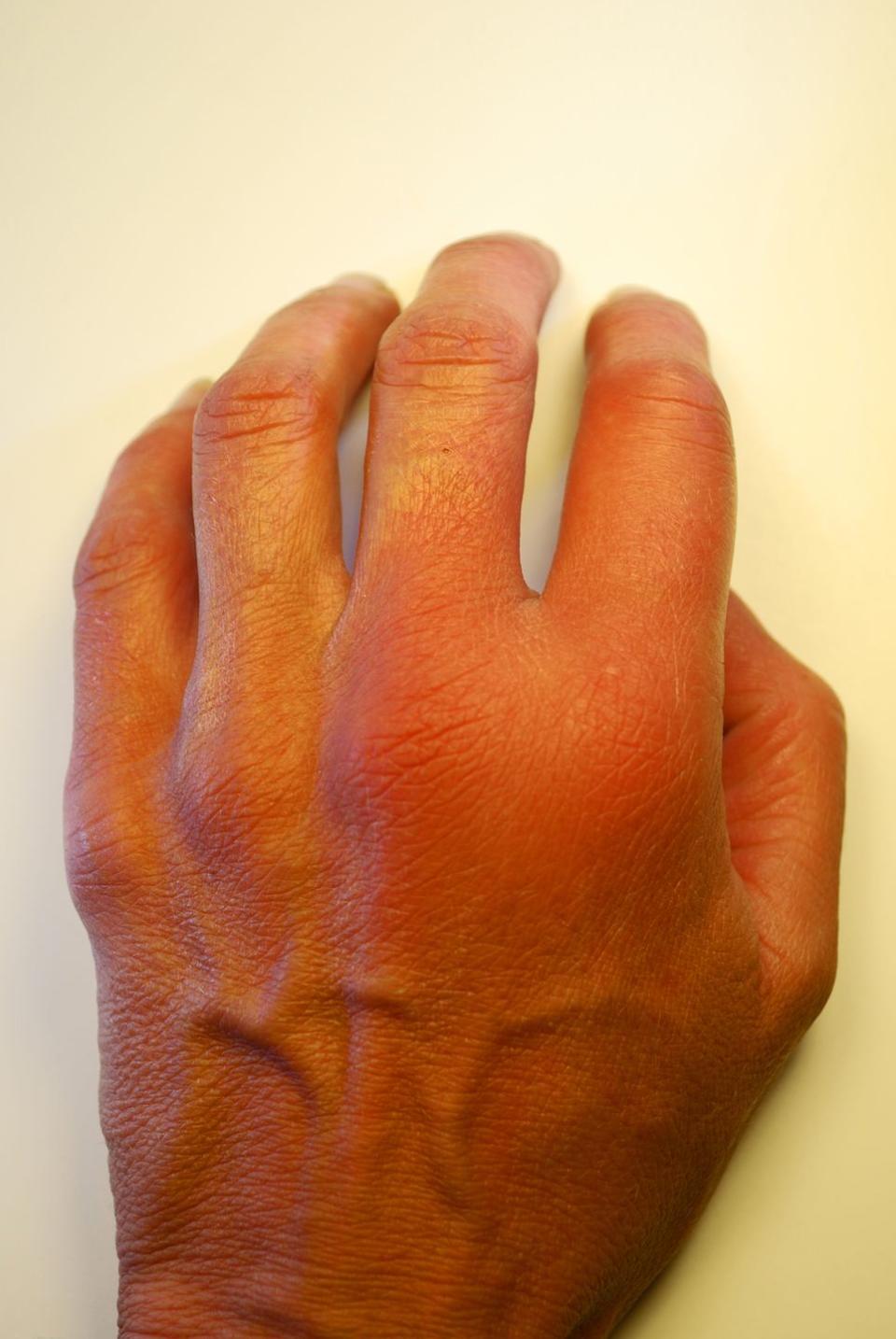Stung by a Bee? Here’s How to Tell if You’re Having a Serious Reaction

While bees may be beneficial for your garden, they might not always be a welcome sight. Get too close and you may be met with a painful sting that leads to an uncomfortable red welt. And for those allergic to bee venom, the symptoms can quickly escalate to severe pain, swelling, and even anaphylaxis, which can be life-threatening without immediate treatment.
But being stung by a bee—even if you’re allergic—doesn’t have to induce panic, according to board-certified allergist Lakiea Wright, M.D., medical director of Thermo Fisher’s Scientific ImmunoDiagnostics Division and associate physician at Brigham and Women’s Hospital.
With the right emergency responses, you’ll quickly be able to tell if you’re having an allergic reaction to a bee sting and respond accordingly.
Back up: What is a bee sting allergy?
If you’re allergic to bee venom and suffer a sting, “your immune system goes haywire,” explains Dr. Wright. “Your body mounts an immune response because it’s perceiving the chemicals from that sting as a foreign attack, like an alarm bell.”
If you’re allergic to a stinging insect, your body will actually pump out antibodies called Immunoglobulin E (IgE) after the first attack, per the American Academy of Allergy Asthma & Immunology. If you’re stung again, the venom will interact with the IgE and spur the release of the substances responsible for the allergic response.
Honey bees, in particular, are problematic because they have a barbed stinger that gets stuck inside the skin. “The venom sack will continue to pump venom into the wound, and this is why it is important to remove a bee’s stinger after getting stung,” Emory Matts, M.S., a board-certified entomologist and technical services manager for Western Exterminator Company, previously told Prevention.com. (Fun fact: Not all bees lose their stinger after an attack!)
But just because you’re allergic to bees doesn’t mean you’re allergic to their close cousins, like wasps and hornets. Some people are allergic to just one type of venom, while others are allergic to more than one, Dr. Wright says.
What are the symptoms of a bee sting allergic reaction?

When it comes to allergic reactions, “there are two major territories,” Dr. Wright explains. The first is mild, or “a large and localized reaction where the sting actually occurs. You can get some redness, swelling, and itching,” as well as a white dot around where the stinger punctured your skin. Although this reaction should be monitored closely, it likely won’t become life-threatening.
“But there’s another type of reaction, which is called a systemic reaction,” Dr. Wright says. Systemic reactions are more severe and can lead to hives, an upset stomach, and dizziness. While these symptoms may not feel like a big deal at first, they are a sign of a more serious allergy, and can easily spiral into anaphylactic shock—the most severe type of allergic reaction—which causes a sudden drop in blood pressure.
If you experience any difficulty breathing, tightness in the chest or throat, or swelling anywhere other than the site of the sting, it’s “a true medical emergency,” according to the National Capital Poison Center. Anaphylaxis happens quickly, within minutes to an hour after the sting, and you should call 911 immediately if you experience any of these symptoms.
Remember: Not every person with a bee sting allergy will experience anaphylaxis when they’re stung, but it’s better to err on the side of caution. If you or someone with you experiences any worrisome symptoms after being stung, it’s crucial that you call for help ASAP.
How to tell if you have a bee sting allergy
If you’re stung and experience more than just the usual pain at the site of the sting (and don’t require immediate medical help), it’s important to talk to your primary care doctor or allergist, Dr. Wright says. “They’ll ask you questions about what happened during the sting to determine if you have an allergy or not.”
They can then comb through your medical history to detect if you are “at-risk for a life-threatening allergy,” she adds. Only an allergy test performed by a doctor can determine which type of venom you’re uniquely susceptible to.
So, you’re allergic to bees and suffer a sting—what should you do?
⚠️ Again, go straight to the ER or call 911 if you feel short of breath, throat tightness, or your tongue or lips swell after a bee, wasp, or hornet sting.
First, Dr. Wright explains that you should look out for any developing symptoms, paying close attention to signs of a systemic reaction or anaphylactic shock.
Anyone who knows they have a severe allergy should have epinephrine (an Epi-Pen) on them at all times. Even after a shot of epinephrine, all patients with severe bee allergies should still go to the hospital for further monitoring after suffering a sting.
If you experience minor symptoms, like persistent redness, itching, or localized swelling, you don’t necessarily have to seek help, but should still be cautious. Dr. Wright recommends gently cleaning the area to avoid potential infection:
Remove the stinger by using your fingernail or a piece of gauze. Do not use tweezers, as the squeezing can push more venom into your skin.
Wash the area with warm water and soap to clean the wound.
Ice the area to tamp down on swelling and inflammation.
If you feel pain, OTC meds like acetaminophen or ibuprofen can help.
Again, keep a close eye on your symptoms, and if they seem to be getting worse—say, you notice oozing pus, more redness and pain, or a fever and chills—it’s time to see your doctor.
Like what you just read? You’ll love our magazine! Go here to subscribe. Don’t miss a thing by downloading Apple News here and following Prevention. Oh, and we’re on Instagram too.
You Might Also Like

